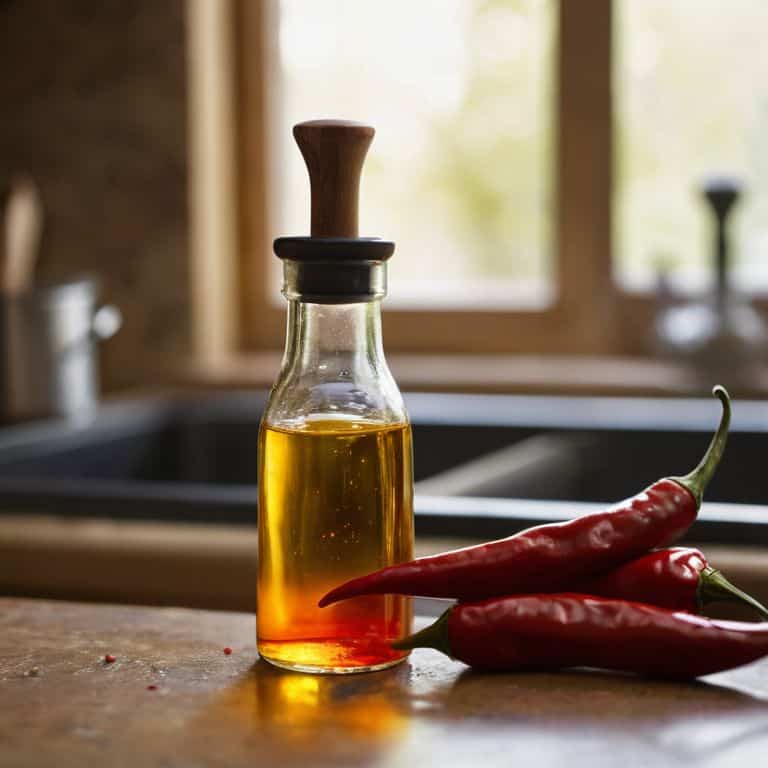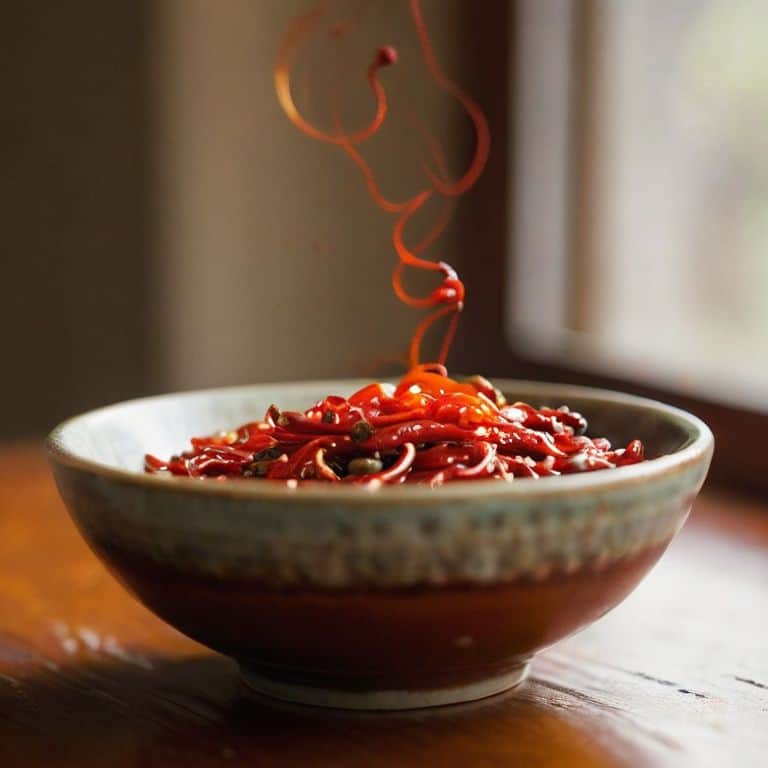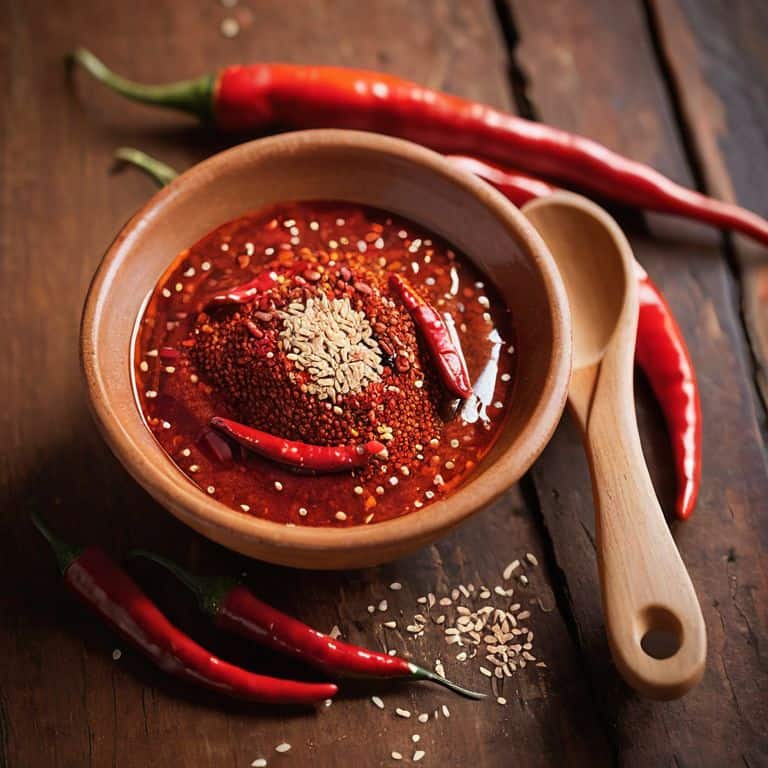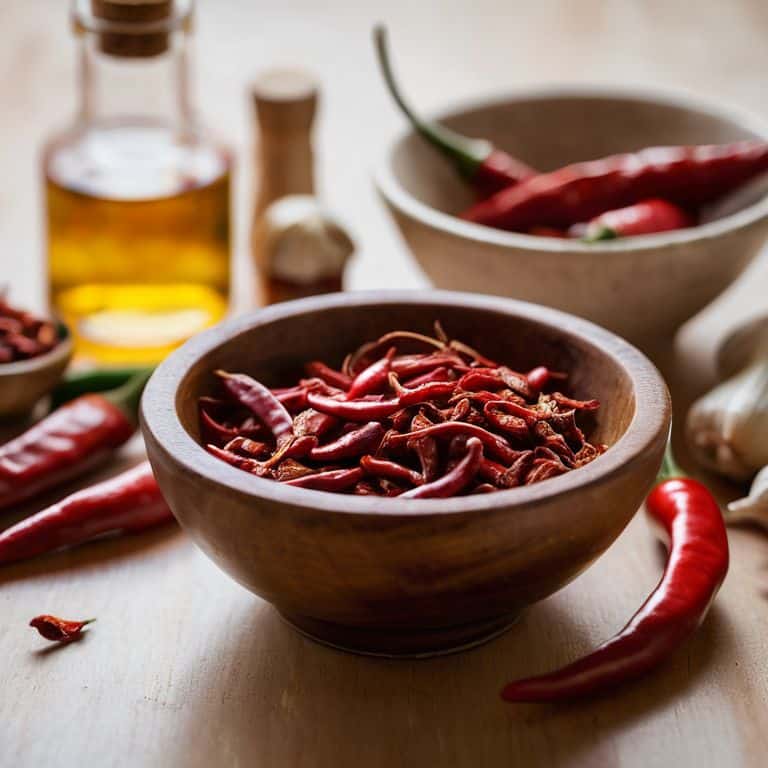I still remember the first time I made my own chili oil – it was a game-changer for my cooking. I was experimenting with different ingredients for my craft cocktail bar, and I stumbled upon a recipe for a guide to making chili oil. What I thought would be a simple process turned out to be a journey of discovery, and I quickly became obsessed with the idea of creating my own flavors from scratch. The myth that making chili oil is a complicated, tedious process is just that – a myth. With a few simple ingredients and some patience, you can create a depth of flavor that will elevate any dish.
As you dive into this journey with me, I promise to share my honest, no-nonsense advice on how to create the perfect homemade chili oil. We’ll explore the basics of selecting the right chili peppers, infusing the oil with flavor, and troubleshooting common issues that may arise. My goal is to empower you with the knowledge and confidence to experiment and create your own unique flavors, just like I do in my small-batch food production. By the end of this article, you’ll be equipped with the skills to make a delicious, aromatically rich chili oil that will become a staple in your pantry.
Table of Contents
- Guide Overview: What You'll Need
- Step-by-Step Instructions
- Igniting Flavors a Guide to Making Chili Oil
- Spice Up Your Life: 5 Essential Tips for Crafting the Perfect Chili Oil
- Key Takeaways for Crafting Unforgettable Chili Oil
- Spicing Up Your Kitchen
- Conclusion: Igniting Your Culinary Passion
- Frequently Asked Questions
Guide Overview: What You'll Need

Total Time: 30 minutes to 1 hour
Estimated Cost: $10 – $20
Difficulty Level: Easy
Tools Required
- Small Saucepan (stainless steel or enameled cast iron)
- Glass Jar (with a tight-fitting lid)
- Fine-Mesh Strainer (for straining chili flakes)
- Measuring Cups and Spoons (for accurate measurements)
Supplies & Materials
- Vegetable Oil (such as peanut or grapeseed oil)
- Dried Red Chili Flakes (or fresh red chili peppers)
- Garlic (optional)
- Ginger (optional)
- Salt (optional)
Step-by-Step Instructions
- 1. First, let’s start by preparing our ingredients, which include a variety of chili peppers – I like to use a mix of jalapeños, serranos, and Anaheim peppers for a balanced heat and flavor. You’ll also need some garlic, olive oil, and any additional spices or flavorings you want to add to your chili oil. I’m a big fan of adding a pinch of smoked paprika to give it a deep, smoky flavor.
- 2. Next, we need to roast our chili peppers to bring out their natural sweetness and depth of flavor. Preheat your oven to 400°F (200°C), and place the chili peppers on a baking sheet lined with parchment paper. Roast them in the oven for about 20-25 minutes, or until the skin starts to blister and char. This will help to loosen the skin and make it easier to peel.
- 3. Once the peppers have cooled down, it’s time to peel and chop them. Remove the skin, seeds, and membranes, and chop the flesh into small pieces. You can also add some minced garlic to the mix – I like to use about 3-4 cloves per cup of chili peppers. Be careful when handling the peppers, as the oils in them can cause skin irritation.
- 4. Now it’s time to create the oil infusion. In a small saucepan, heat about 1/2 cup of olive oil over low heat. Add the chopped chili peppers and garlic, and let it simmer for about 10-15 minutes, or until the mixture has reduced slightly and the flavors have melded together. You can help the process along by occasionally stirring the mixture and making sure everything is well coated with the oil.
- 5. While the oil is infusing, you can prepare the spices and flavorings. I like to add a pinch of salt, a few grinds of black pepper, and a sprinkle of dried oregano to give the chili oil a bit of depth and complexity. You can also add other spices or herbs to taste – just be sure to taste and adjust as you go.
- 6. Once the oil has infused, it’s time to strain and bottle. Use a fine-mesh sieve or cheesecloth to strain the oil into a clean glass bottle, discarding the solids. You can also add a few fresh chili peppers or garlic cloves to the bottle for visual appeal and to continue infusing the oil over time.
- 7. Finally, let’s age and enjoy our homemade chili oil. Store the bottle in a cool, dark place, and let it age for at least a week or two to allow the flavors to mature. You can use the chili oil as a finishing touch for a variety of dishes, from noodles and stir-fries to tacos and grilled meats. Just be sure to use it within a few months, as the flavors will start to fade over time.
Igniting Flavors a Guide to Making Chili Oil

As I experiment with different chili oil recipe for noodles, I’ve come to realize that the key to a great flavor lies in the balance of spices. I like to add a pinch of Szechuan peppercorn to give it a unique numbing sensation. This trick has become a staple in my kitchen, and I love watching my friends’ faces light up when they try it.
When it comes to using chili oil in cooking, the possibilities are endless. I’m a big fan of adding a drizzle of spicy chili oil for dumplings to give them an extra kick. It’s amazing how a small amount of this oil can elevate the entire dish. For those who like to get creative, I recommend exploring different Asian chili oil varieties to find the one that suits your taste buds the best.
For a fun and thoughtful gift, consider making homemade chili oil gift ideas for your friends and family. You can customize the flavor to their liking and package it in a beautiful glass bottle. Not only is homemade chili oil a unique present, but it also comes with numerous chili oil health benefits, making it a great addition to any kitchen.
Crafting Spicy Chili Oil for Dumplings and Noodles
Now that we’ve unlocked the secrets of Szechuan peppercorn oil, let’s dive into crafting the perfect spicy chili oil for dumplings and noodles. I love using this oil to add a depth of flavor to my favorite Asian-inspired dishes. To give it that extra kick, I like to blend in some dried arbol chilies or Korean chili flakes.
The key is to find the right balance of spicy and savory – you want to be able to taste the richness of the chili oil without it overpowering the delicate flavors of your dumplings or noodles. Experiment with different ratios of chili to oil until you hit that sweet spot. Trust me, it’s worth the effort – homemade chili oil elevates any dish to a whole new level!
Unlocking Szechuan Peppercorn Oil Blend Secrets
Now that we’ve got our chili oil game strong, let’s talk about taking it to the next level with Szechuan peppercorn oil blend. I’m obsessed with the numbing, slightly spicy flavor it adds to dishes. To unlock its secrets, I like to toast the Szechuan peppercorns in a dry pan before infusing them in oil. This brings out their unique aroma and flavor.
By combining this infused oil with our homemade chili oil, we create a truly show-stopping flavor experience. I love using it as a finishing touch for noodles, dumplings, or even as a marinade for grilled meats. The possibilities are endless, and I’m excited for you to start experimenting with this incredible oil blend in your own kitchen.
Spice Up Your Life: 5 Essential Tips for Crafting the Perfect Chili Oil

- Start with the right chili peppers – I like to use a mix of jalapeno, serrano, and Anaheim for a balanced heat and flavor
- Experiment with different oil ratios – too little oil and your chili oil will be too spicy, too much and it’ll be bland
- Don’t be afraid to add aromatics – garlic, ginger, and shallots can add incredible depth to your chili oil
- Infuse, don’t just mix – let your chili oil sit for at least a week to allow the flavors to meld together and the heat to distribute evenly
- Get creative with your flavor combinations – try adding a pinch of cumin, coriander, or smoked paprika to give your chili oil a unique twist
Key Takeaways for Crafting Unforgettable Chili Oil
Experiment with various types of chili peppers and spices to create unique flavor profiles that elevate your dishes from ordinary to extraordinary
Don’t be afraid to get creative with your chili oil by infusing it with other ingredients like garlic, ginger, or Szechuan peppercorns to add depth and complexity
Remember, the art of making chili oil is all about balance and harmony, so taste and adjust as you go, and don’t hesitate to store your creations in beautifully crafted wooden shelves or decorative jars to add a personal touch
Spicing Up Your Kitchen
The beauty of making chili oil lies not just in the flavor it adds to our dishes, but in the process itself – the experimentation, the trial and error, and the joy of watching raw ingredients transform into something truly magical.
Tom Navarro
Conclusion: Igniting Your Culinary Passion
As we conclude this journey through the world of homemade chili oil, let’s reflect on the key takeaways: from the simplicity of infusing oils with fresh chili peppers and garlic, to the complexity of blending Szechuan peppercorns for a unique flavor profile. We’ve explored the art of crafting spicy chili oil for dumplings and noodles, and even touched on the secrets of unlocking the perfect Szechuan peppercorn oil blend. By following these steps and experimenting with different ingredients, you’ll be well on your way to becoming a master of flavor in your own kitchen.
So, what’s next? Now that you’ve got the basics down, it’s time to get creative and start experimenting with your own unique chili oil blends. Remember, the beauty of making your own chili oil lies in its customizability, so don’t be afraid to try new things and push the boundaries of what you thought was possible. With a little practice and patience, you’ll be igniting your pantry and taking your dishes to the next level in no time, and that’s a truly satisfying feeling.
Frequently Asked Questions
What is the best type of chili pepper to use for making chili oil?
For me, it’s all about the bold, smoky flavor of Korean chili flakes or the vibrant kick of fresno peppers. But if I’m being completely honest, my go-to is the humble jalapeño – it adds this incredible depth and a touch of sweetness that elevates the entire chili oil experience.
How do I determine the right balance of spice and flavor in my homemade chili oil?
For me, it’s all about feel and taste. I add a pinch of this, a dash of that, and then let my taste buds guide me. Start with a small batch, taste as you go, and adjust the spice level to your liking. Remember, you can always add more heat, but it’s harder to take it away once it’s added.
Can I customize my chili oil recipe with other ingredients, such as garlic or ginger, and if so, how?
Absolutely, get creative! I love adding minced garlic or grated ginger to my chili oil for an extra depth of flavor. Just sauté them with the chili peppers for a minute or two before blending, and adjust to taste. The possibilities are endless, so don’t be afraid to experiment and make it your own!
